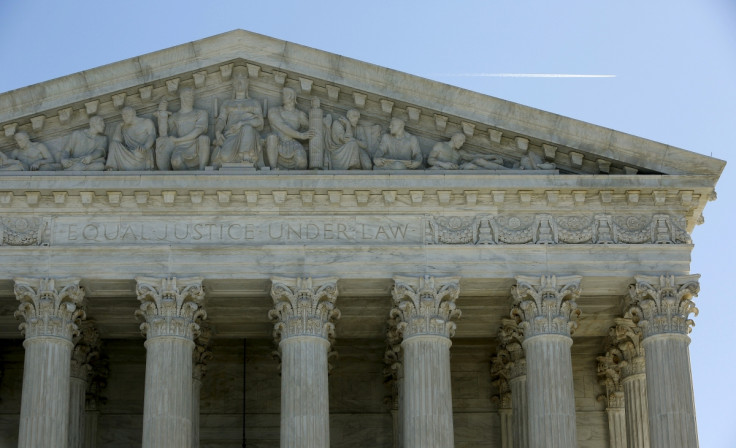US Supreme Court upholds 'one person, one vote' rule regarding electoral districts

The US Supreme Court unanimously upheld the "one person, one vote" rule that requires states to draw election districts based on total population of an area. The ruling on 4 April delivers a blow to conservatives who hoped to draw districts based on the number of people eligible to vote.
According to The Washington Post, the court's ruling opened up the possibility that other redistricting methods could be constitutional. However, the decision made certain that those methods must use total population or else face a review by the highest court of the land.
The case of Evenwel v Abbott takes a look at the "one person, one vote" rule and the Equal Protection Clause of the 14th Amendment. NBC News noted that the Constitution requires congressional districts to be drawn up based on population, however, the Equal Protection Clause does not specify which total population should be used in creating state legislative districts
In writing for the court, Justice Ruth Bader Ginsburg said there was no reason to constitutionally require eligibility to vote instead of total resident population be used to draw up districts. "What constitutional history and our prior decisions strongly suggest, settled practice confirms," wrote Ginsburg.
"Adopting voter-eligible apportionment as constitutional command would upset a well-functioning approach to districting that all 50 States and countless local jurisdictions have followed for decades, even centuries."
Ginsburg continued: "As the Framers of the Constitution and the Fourteenth Amendment comprehended, representatives serve all residents, not just those eligible or registered to vote."
The lawsuit would have significant implications for the whole of the US, specifically for states with large minority populations ineligible to vote. Most states use data from the US Census, which is conducted every 10 years and includes non-citizens, children and felons.
Advocates claim that a mandate that districts be based on registered or eligible voters would have excluded 45% of the Asian American population and between 30% and 40% of the native Hawaiian and Pacific Islander population.
"Everyone counts in our nation's democratic process," said Christopher Kang, the national director of the National Council of Asian Pacific Americans. "The lives of every individual in the United States – whether or not they are eligible to vote – are affected by government policies and therefore deserve representation."
Latino groups also applauded the ruling, with Democratic Representative Linda T Sánchez of California saying the challenge "was a conservative effort to undermine the growing influence of the Latino community. Today's unanimous decision is a victory and reaffirms the fundamental principle that in the United States each person counts."
According to the Washington Post, the unanimous court decision served as middle ground between several differing positions. While the challengers vied for voting-eligible population, the Obama administration supported total population. Meanwhile, Texas, whose state Senate districts were challenged, wanted to have both options.
The court declined to move further after ruling that the total population should be used. "By ensuring that each representative is subject to requests and suggestions from the same number of constituents, total population apportionment promotes equitable and effective representation," Ginsburg added.
© Copyright IBTimes 2025. All rights reserved.






















